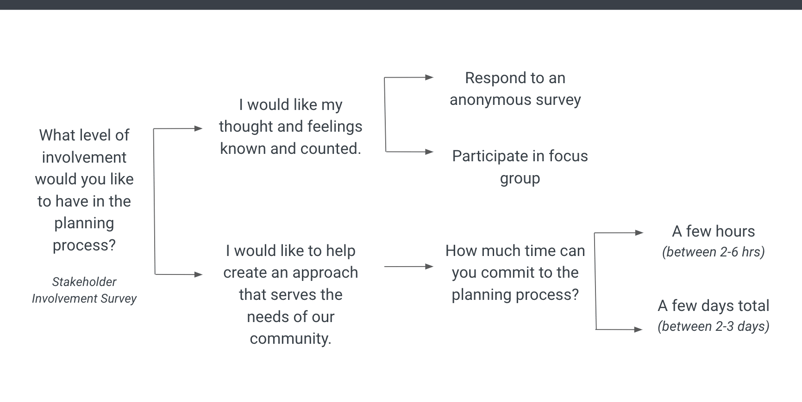
The Importance of Involving Stakeholders Throughout the Strategic Planning Process
To see students and community members in action - that is the stuff we, as educators, dream about. Most recently in a suburban school district outside of Cincinnati, Ohio. My teammates, Megan Campion and Briana Cash, and I got to host community gatherings over the course of two-days with two in-person and two virtual sessions. These experiences confirmed the belief that districts should bring groups of people together to discuss and define the next strategic plan whether it’s a combination of virtual or in-person experiences.
What we know to be true – is that after the last 18-24 months of dealing with the pandemic – this opportunity to think big for any community is the key to increasing psychological safety between the community and schools.
When the future is unpredictable there’s a need to build a strategic plan that can withhold resilience. We know resilience is connected to relationships. A district’s notion to invest and create, alongside all stakeholders, allows for district and school leaders to engage in lateral thinking and begin to build more trust and psychological safety around the future. Lateral thinking is the method of problem solving that embraces alternative solutions through creativity. This suburban school district in particular is constantly mixing lateral thinking and vertical thinking into the strategic planning process with stakeholder engagement whether that’s through survey responses, focus groups, community engagements events, or socializing concepts with small group check-in calls. In a culture that is being shaped by ever increasing exposure to the virtual world, many of us need some help in forming solid, deep connections with people in our community.
Here are three practices that helped this Ohio district to continue to cultivate trust amongst their stakeholders during the strategic planning process:
1. Define the work, before the people.
The District Project Team and Education Elements determined early on to cast a wide net. Prior to recruiting members to the different governance structures and experiences, this district, with consultation from the team at Education Elements, considered the relationship between roles, accountabilities, and people that were essential to changing the way the strategic plan got done. They knew this was an opportunity to bring together people to celebrate the accomplishments to date with the district, emphasize a shared vision, and create a new strategic direction that embodied the values of what stakeholders wanted for the future.
Each level in the governance structure had specific accountabilities and a role in the strategic planning process. This was done through an all call where every taxpayer in the district had an opportunity to share what their level of involvement would look like, which filtered the responses into the degree and level of involvement. A community member who was able to dedicate multiple days to this process, for instance, might be included in the pool of individuals to support the Steering Team.

2. Students at the center.
The district understood that -- who we engaged and how we engaged them -- said more about the values of the district than the plan ever would. The involvement of alumni was a critical element of the strategic planning process as the district evaluated the quality and impact of the educational experiences they had had. There was a concerted effort to get the survey out to recent alumni from the past 5 years. And, in collaboration with members of the Project Team, school leadership and school board members were happy to report that the number of respondents of alumni increased by over 50% by leaving the survey window open for a longer period of time.
3. Look to experts who are forecasting the future for our students.
Through conversations with stakeholders, it became clear that the stakeholders want the district to be able to adapt quickly and effectively to new challenges as they come their way. To increase the chances of prioritizing the right initiatives, the community mentioned the need to hear from experts in the field who are forecasting what the next 5-10 years will look like for students in terms of how universities will be shifting practices for admissions, to the trends happening in health and wellness, to financial forecasting. The value of bringing together experts – who can advise the district in identifying larger patterns and relationships – will support the long-term strategy in the strategic plan. This strategy for engagement immediately gives the new strategic plan a competitive advantage for long term success.
Together, anything is possible. In partnership with all community stakeholders, we’re capable of shaping the next strategic plan and unleashing the potential of every individual within a community. We know that the level of stakeholder engagement designed during the strategic planning process will lead to bold insights and fearless ways of working together, boosting creativity, communication and overall performance of a district.
About Kelly Freiheit
Kelly is on the Design and Implementation Team. Kelly is a former science blended learning teacher from Charlotte, NC. She began to recognize the parallels between her life as a struggling reader in elementary school and her work on education’s front lines. Kelly knew she loved collaboration, camaraderie, and the pursuit of a common goal, but hadn’t drawn the connection between those passions and the career she now counts among them. Outside of work you can find Kelly relaxing on a yoga mat or spending time with family and friends.


